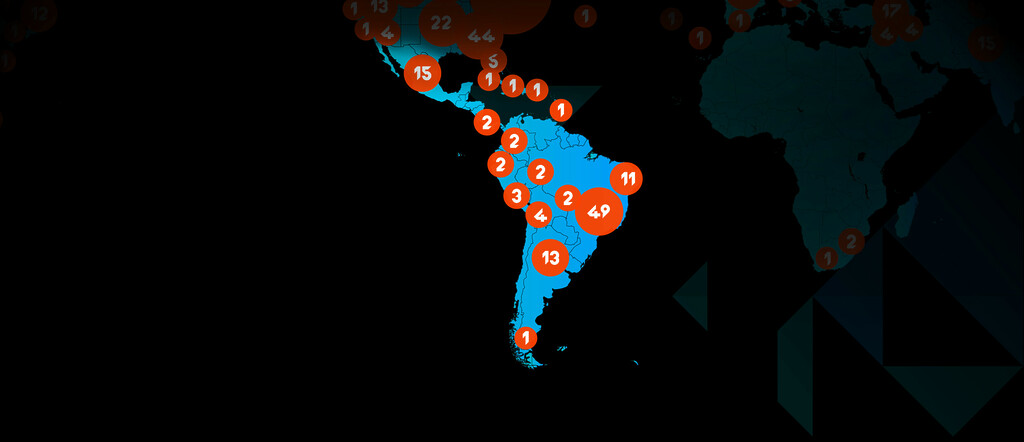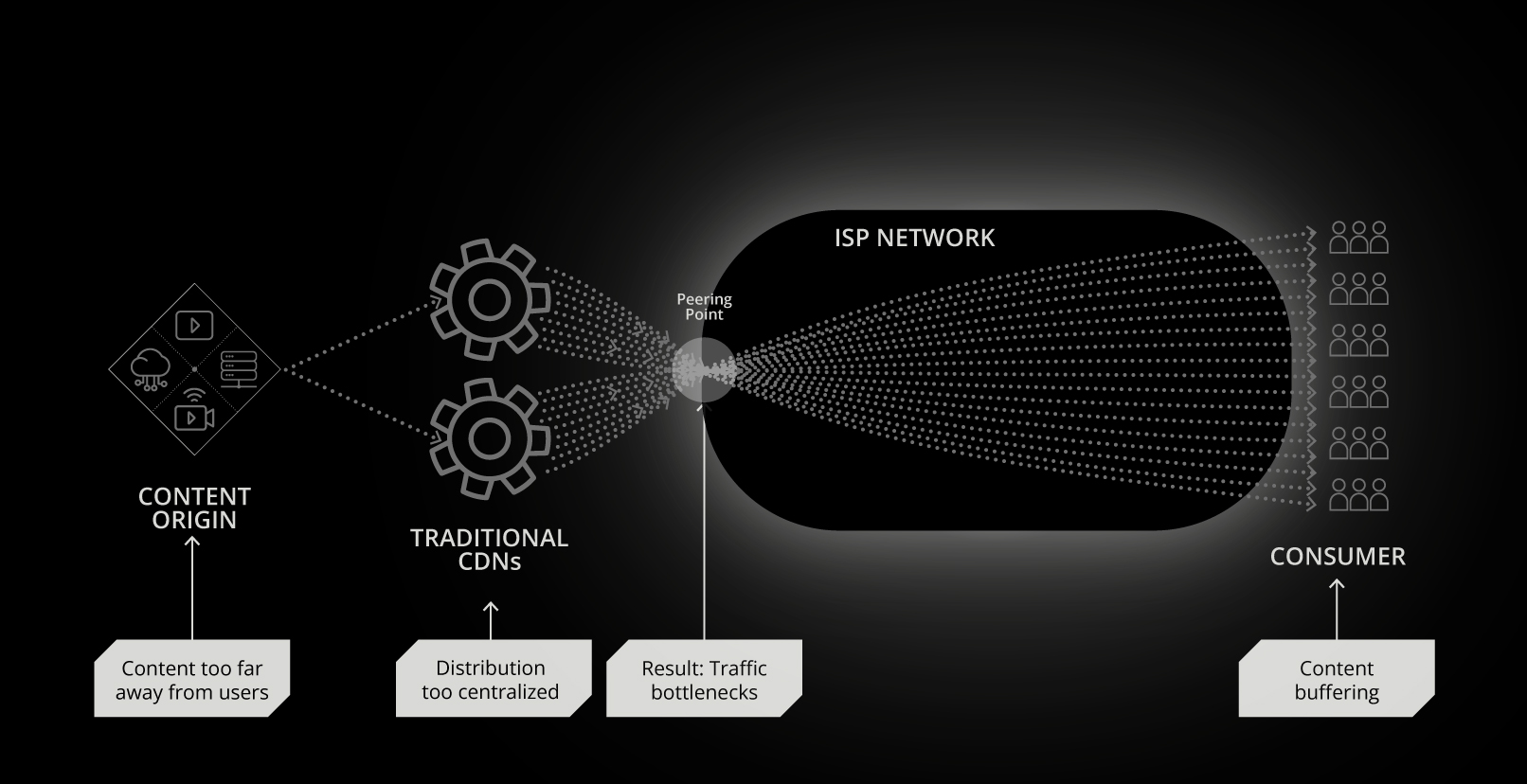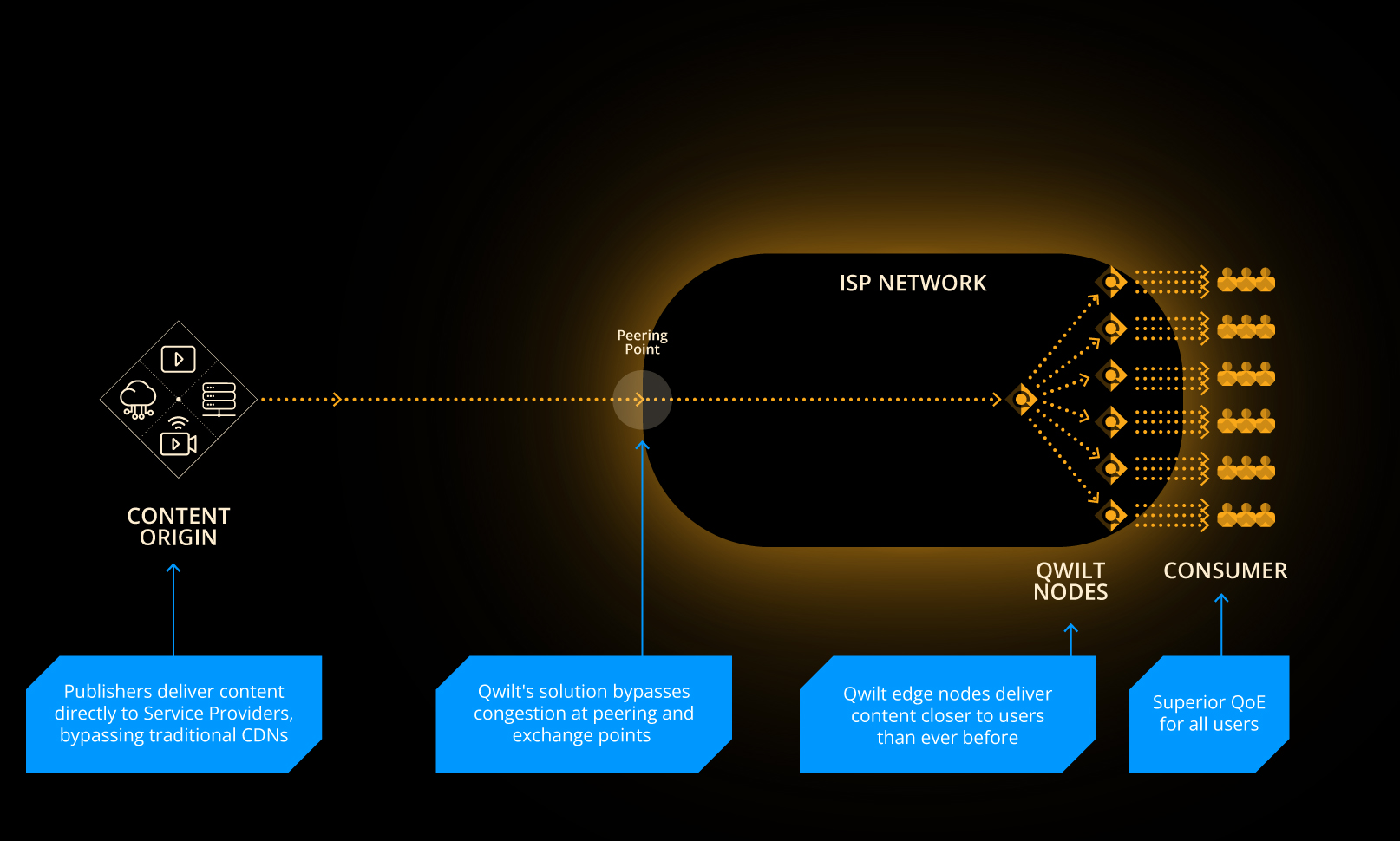Quality Counts
The Current Content Delivery Model Does Not Scale
Today’s OTT content distribution model depends heavily on commercial CDNs building out their own infrastructure to handle growing demands, as well as adding enough capacity at peering and exchange points to ensure content reaches each service provider network. Most CDNs don’t have the financial or operational strength to stay ahead of capacity demands; and even when they do, there is no guarantee that traffic from one CDN won’t cause congestion for traffic from another, as both try to ship their streams into service providers networks and on to consumers. There is a growing gap between the extraordinary consumer demand for content and the expected ability of commercial CDNs to keep up with it.
Qwilt has created a better way to deliver your content. Based on our deep relationships with service providers, our Qwilt content delivery services offer better performance, relieving content bottlenecks, and ensuring that your content is delivered in the quality it was originally imagined. Closer is better.
Traditional CDN Architecture
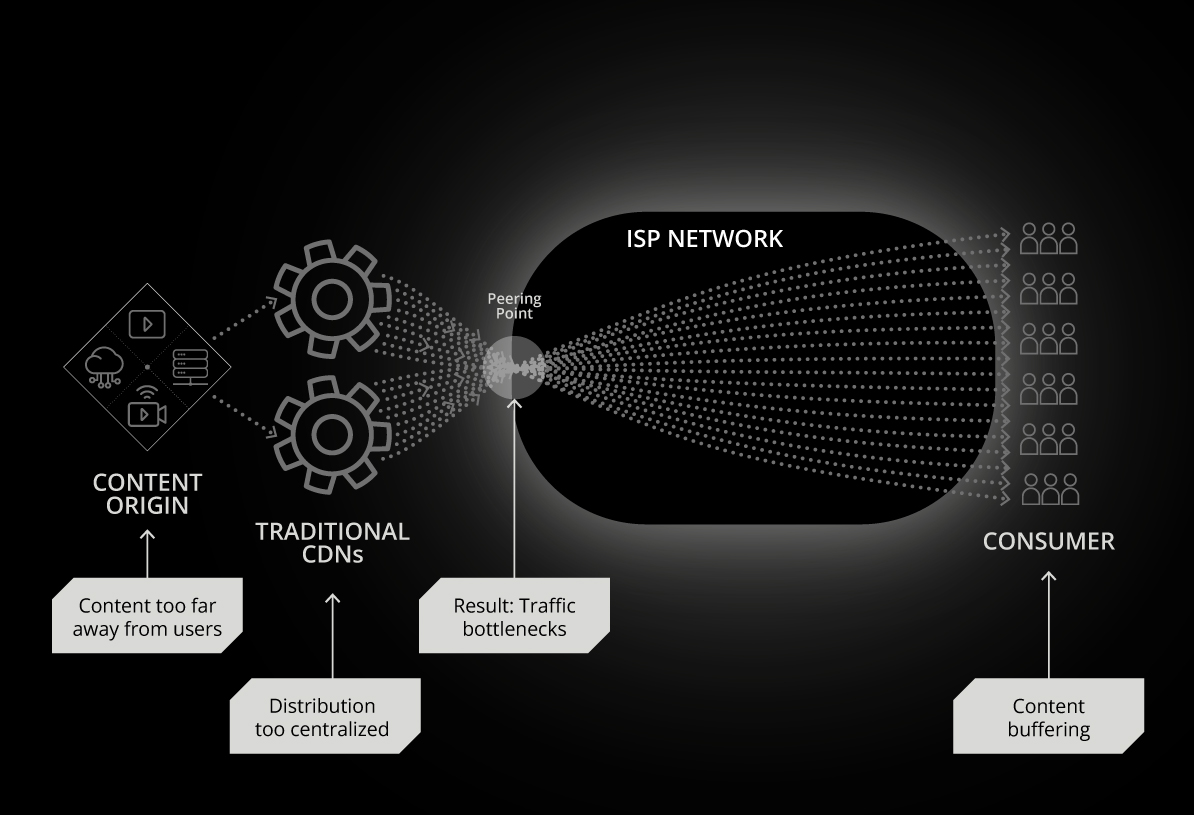
Qwilt Architecture
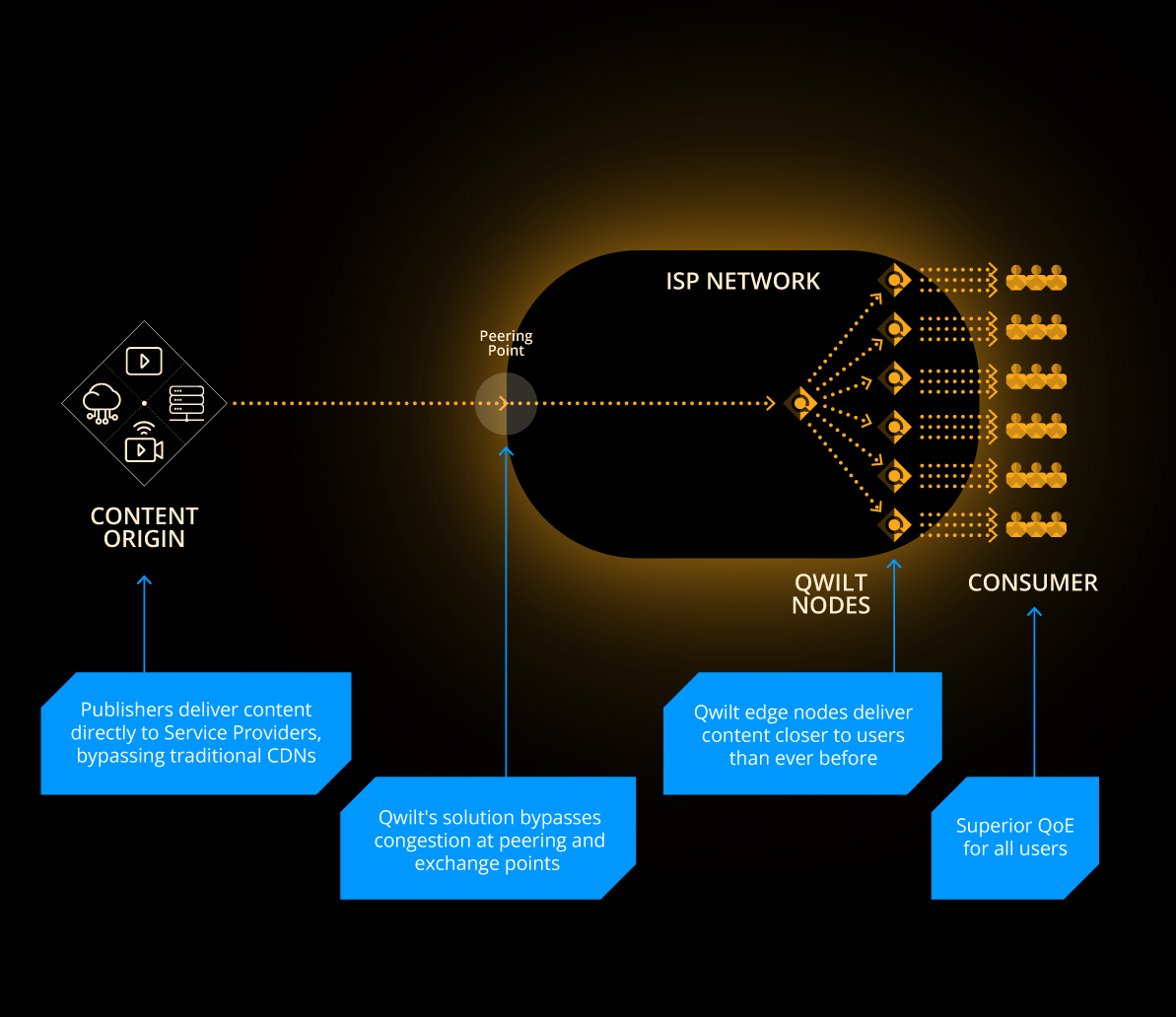
Seamless Delivery with Open Caching
Our CCO, Jesper Knutsson, explains how Qwilt’s relationships with service providers form a unified ecosystem with content publishers, enabling seamless delivery and a high-quality experience for end users.
Media Delivery
Whether you offer streaming video, gaming, VR or other media, learn how you can get closer to your viewers to ensure they have the best viewing experience every time.
Site Delivery
Online audiences have increasingly high expectations for news, shopping or other digital services. Learn how you can get closer to your users to ensure they have the best digital experience each time they access your site.

